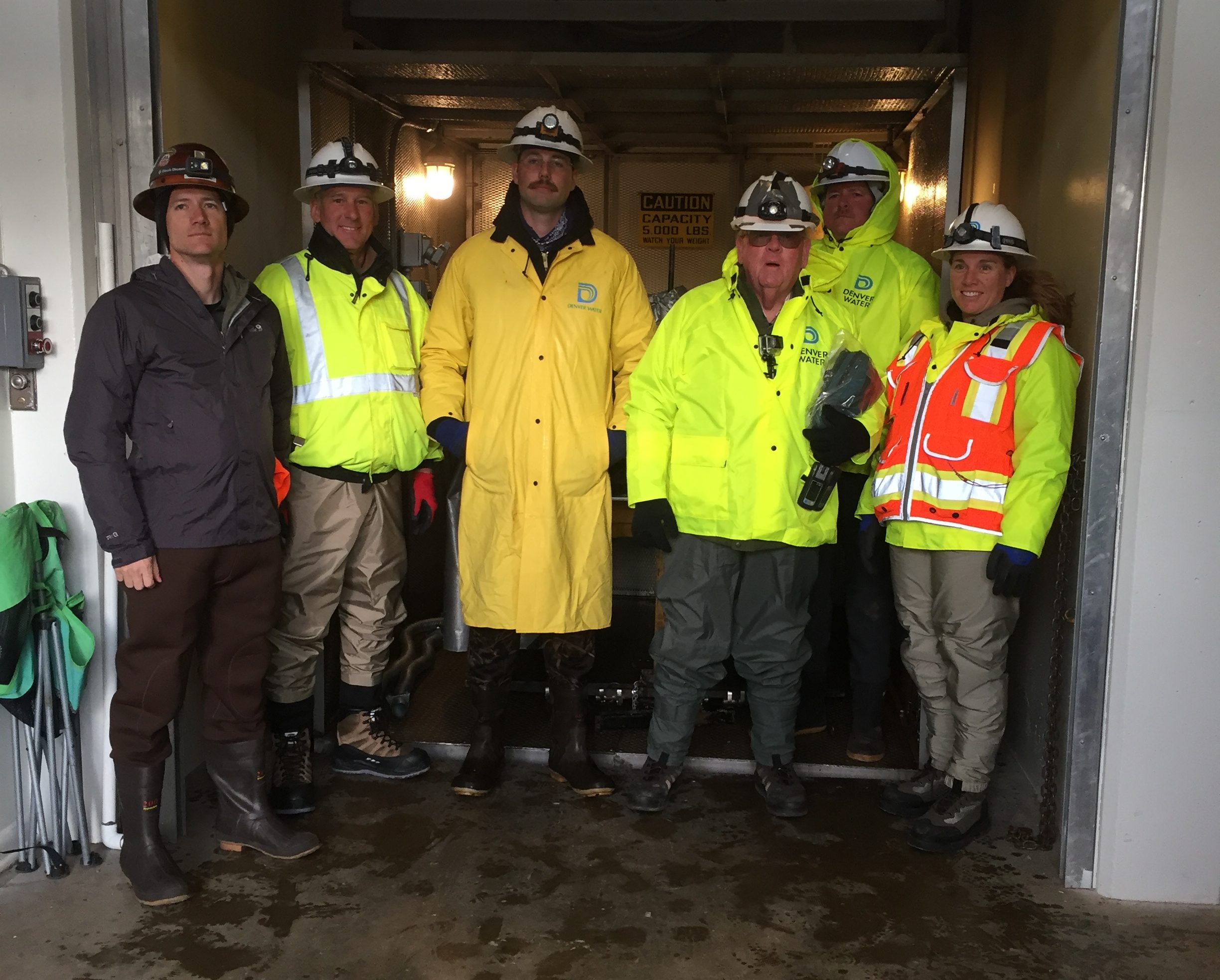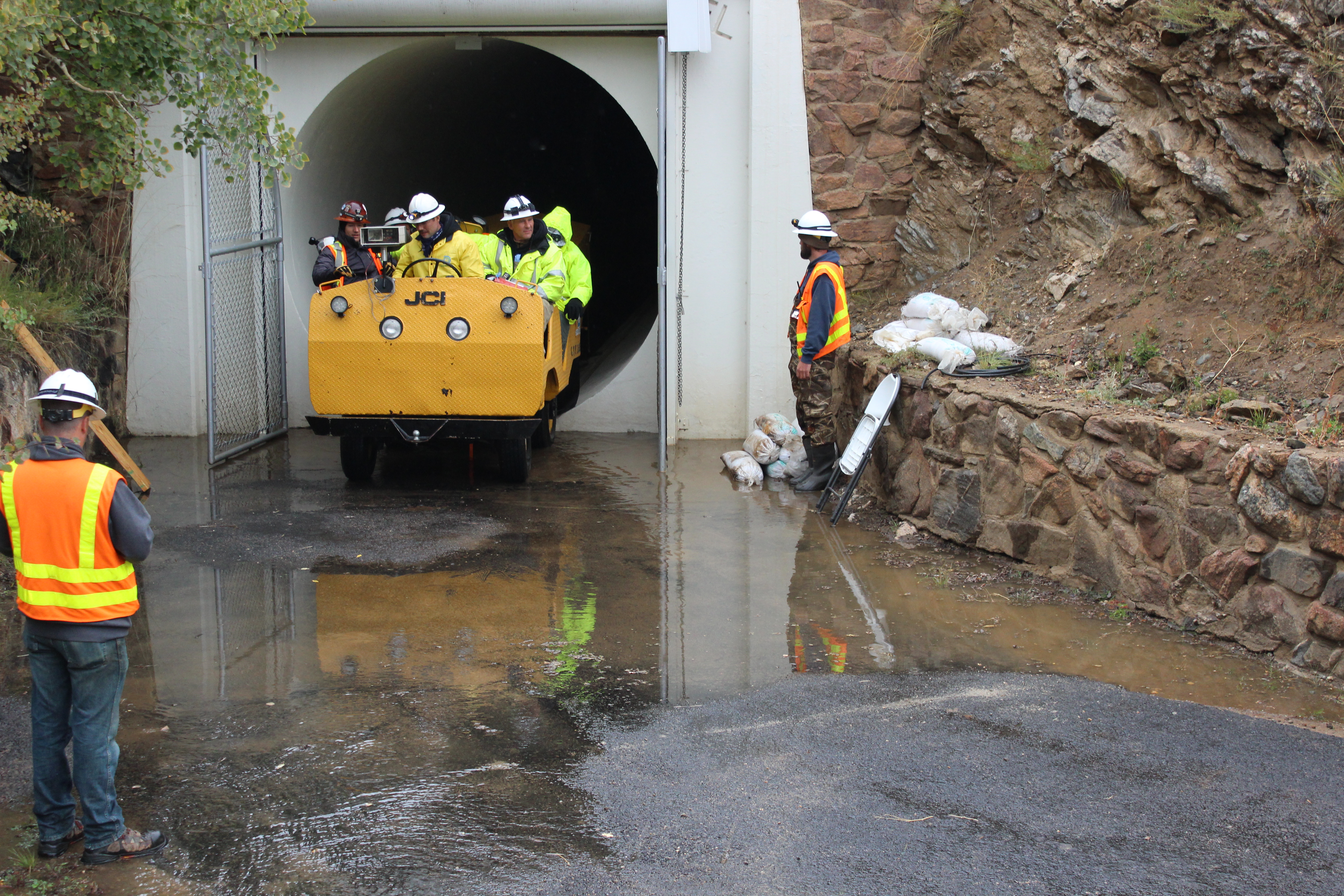
Into the dark, under the Divide and out the other side
This is not your typical road trip. Twenty-three miles long and more than 4,000 feet underground, navigating Roberts Tunnel is more like driving a convertible through a car wash in the dark.
And for the Denver Water team that inspects this critical piece of infrastructure, it’s a big task, and not for the faint of heart.
Starting in Summit County, Roberts Tunnel carries water from Dillon Reservoir, under the Continental Divide and into the North Fork of the South Platte River in Park County before heading on to customers in Denver. Completed in 1962, the tunnel took 16 years to build and can deliver more than 480 million gallons of water a day to the Front Range. It’s nearly as long as the Chunnel under the English Channel.
“It’s an impressive piece of engineering,” said Erin Gleason, a Denver Water dam safety engineer. “We inspect the tunnel every five years to check for debris and look for any structural issues.”
On Sept. 21, a six-person inspection team went into the tunnel entrance at Dillon Reservoir and spent four hours driving through the 10-foot-diameter passageway to the tunnel’s east portal, near the town of Grant in Park County.
“When we do tunnel inspections, we’re looking for shifts and cracks in the concrete lining,” Gleason said. “We compare notes from past inspections to see if there are any changes that could lead to future problems.”
Before the inspection begins, Denver Water drains the tunnel so the team can go through, but it’s not completely dry — especially at the entry point where the tunnel runs under Dillon Reservoir.
“It’s definitely wet at the beginning,” Gleason said. “Pressure from the water in the reservoir seeps through the rock and concrete and drains into the tunnel.”
While the water makes for a soggy ride, Gleason said seepage is not unusual to see inside tunnels and is not considered a major problem. The tunnel is basically dry after the first mile.
“We didn’t find any defects,” said Garret Miller, Roberts Tunnel supervisor. “It was a long ride, but this is something we have to do to make sure the tunnel can deliver water to our customers.”
A tunnel engineering consultant rode with the inspection team and declared the tunnel’s concrete lining to be in excellent condition.
“It’s really a team effort to pull off inspections like this, and we had an outstanding team,” Gleason said. “With regular inspections and maintenance, this tunnel will last well into the future.”


